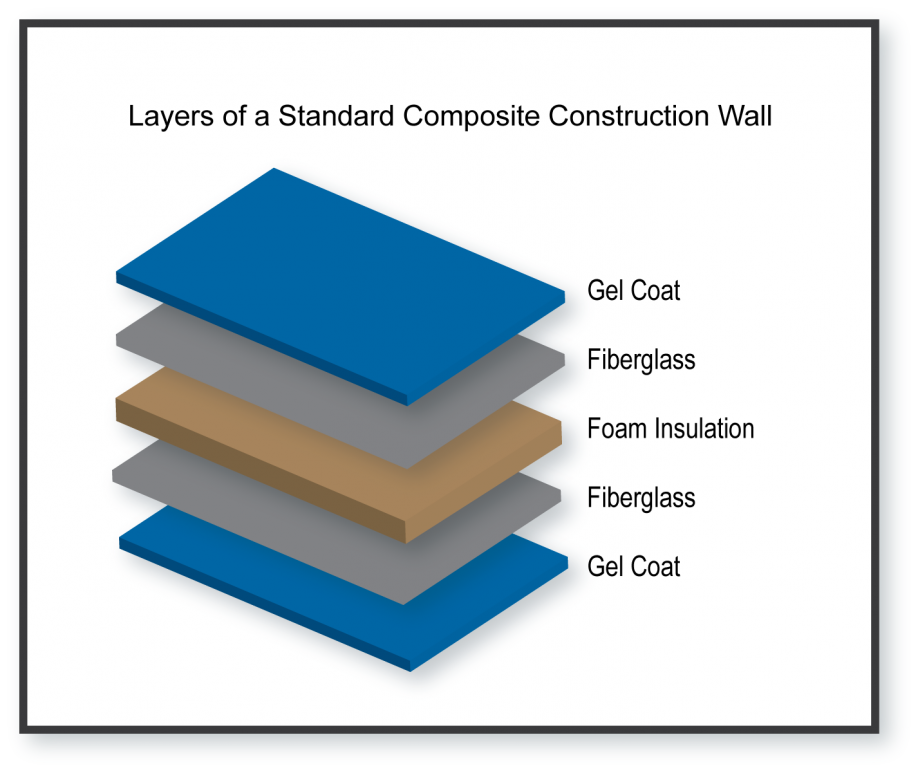Composites: The Future of Lasting Building And Construction Materials
Composites: The Future of Lasting Building And Construction Materials
Blog Article
Opening the Environmental Advantages of Recycled Compounds in Building and Style
In the realm of building and style, the application of recycled compounds holds significant guarantee for improving sustainability methods and decreasing ecological influence. The change in the direction of a more sustainable future in these markets pivots on unlocking the full capacity of recycled composites.

Environmental Impact Reduction
The reduction of ecological effect with using recycled composites in construction and style plays an essential duty in lasting practices. By incorporating recycled compounds right into structure materials, the construction industry can significantly lower its carbon footprint and add to an extra green future. These lasting products, made from repurposed plastics, wood fibers, or other recycled elements, offer a practical alternative to traditional building products without endangering on top quality or durability.
Recycled compounds aid draw away waste from land fills and lower the requirement for drawing out raw materials, hence saving natural sources. Furthermore, the manufacturing process of these compounds often eats much less power and produces fewer greenhouse gases compared to creating virgin products (composites). This change in the direction of making use of recycled compounds not only decreases environmental injury however likewise promotes a circular economy by urging the reuse of products that would or else be thrown out
Waste Minimization
With a focus on minimizing waste in building and construction and style, the assimilation of recycled compounds offers a sustainable service to lower ecological impact. Waste reduction is an essential facet of sustainable practices, and using recycled compounds provides an opportunity to accomplish this objective properly. By utilizing materials that have currently offered their initial function, such as recycled plastics or recovered timber fibers, the construction and design industries can dramatically reduce the amount of waste generated and sent to land fills.
Recycled compounds have the possible to draw away significant quantities of waste from conventional disposal techniques, adding to an extra round economy where resources are used effectively. Furthermore, the production process of recycled composites frequently consumes less power and generates less exhausts contrasted to virgin products, additionally minimizing the environmental impact of construction and layout tasks.
Applying waste reduction approaches via the unification of recycled compounds not just assists in saving natural deposits but also advertises an extra lasting strategy to structure and creating for a greener future.
Energy Conservation
Incorporating recycled compounds not just lessens waste in building and style but also plays a vital function in enhancing energy preservation methods within the market. Using recycled compounds in building can considerably contribute to power preservation through numerous ways. First of all, the production of virgin products usually requires significant energy inputs, whereas using recycled compounds consumes less energy, consequently decreasing total energy consumption. In addition, incorporating recycled compounds can add to much better insulation residential properties in buildings, minimizing the need for too much heating or cooling, and subsequently lowering energy use for environment control. The light-weight nature of numerous recycled composites can lead to lighter frameworks, requiring less energy for transport and installment. By promoting making use of recycled compounds in construction and layout, the sector can make significant strides towards accomplishing power performance and reducing its carbon footprint, eventually adding to a much more lasting constructed atmosphere.
Carbon Footprint Decrease
Enhancing sustainability practices via the use of recycled composites in building and design substantially decreases the carbon footprint of the sector. By integrating recycled read materials into the manufacturing of compounds, the requirement for virgin resources lowers, leading to reduced energy consumption and greenhouse gas exhausts connected with traditional production processes. This decrease in carbon impact is vital in combating climate adjustment and promoting a more eco pleasant approach to construction and style.
Additionally, the use of recycled compounds also aids in diverting waste from land fills, consequently reducing the ecological impact of disposal and advertising a circular economy. The carbon impact reduction accomplished through the fostering of recycled compounds lines up with the international press in the direction of lasting practices and the decrease of industrial discharges. It showcases a commitment to accountable source management and a change towards greener options in the construction and style sectors. Inevitably, by focusing on the integration of recycled composites, the sector can make significant strides in reducing its carbon impact and adding to a much more sustainable future.
Lasting Future
The assimilation of recycled composites in construction and layout not just addresses instant environmental worries but additionally lays a solid structure for a sustainable future in the sector. By integrating recycled composites right into building products and products, the building and construction and style fields can significantly lower their reliance on virgin resources, resulting in an extra circular economy. This change in the direction of sustainability is vital for reducing the ecological impact of typical building and construction practices, which usually lead to high degrees of waste generation and resource exhaustion.

Conclusion
To conclude, recycled compounds offer substantial ecological benefits in building and layout by reducing ecological influence, decreasing waste, conserving power, lowering carbon impact, and advertising a lasting future. Accepting the use of recycled composites can add to an extra environmentally-friendly strategy to structure and layout, inevitably causing a much more sustainable and greener future for all.
The decrease of ecological effect through the usage of recycled compounds in building and layout plays an important role in lasting techniques.With an emphasis on reducing waste in building and construction and style, the combination of recycled composites uses a sustainable service to minimize environmental effect. By advertising the usage of recycled composites in building and design, the industry can make substantial strides in the direction of accomplishing energy efficiency and reducing its carbon impact, inevitably contributing to a much more discover here sustainable built environment.

Report this page